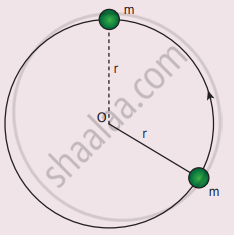Advertisements
Advertisements
प्रश्न
A body of mass 1 kg is thrown upwards with a velocity of 20 ms−1. It momentarily comes to rest after attaining a height of 18 m. How much energy is lost due to air friction?.
पर्याय
20 J
30 J
40 J
10 J
उत्तर
20 J
APPEARS IN
संबंधित प्रश्न
How has the consumption pattern of energy changed over the years?
What problems are being faced by the power sector in India?
Discuss the reforms which have been initiated recently to meet the energy crisis in India.
A body of mass 4 m is lying in xy-plane at rest. It suddenly explodes into three pieces. Two pieces each of mass m move perpendicular to each other with equal speed v. The total kinetic energy generated due to explosion is ______
Write the differences between conservative and Non-conservative forces. Give two examples each.
Define the following:
Law of conservation of energy
Define the following:
loss of kinetic energy in an inelastic collision.
A bob of mass m is attached to one end of the rod of negligible mass and length r, the other end of which is pivoted freely at a fixed center O as shown in the figure. What initial speed must be given to the object to reach the top of the circle? (Hint: Use law of conservation of energy). Is this speed less or greater than the speed obtained in section 4.2.9?

Which of the following is a commercial source of energy?
From which of the following sources of generation do we get the largest amount of power?
